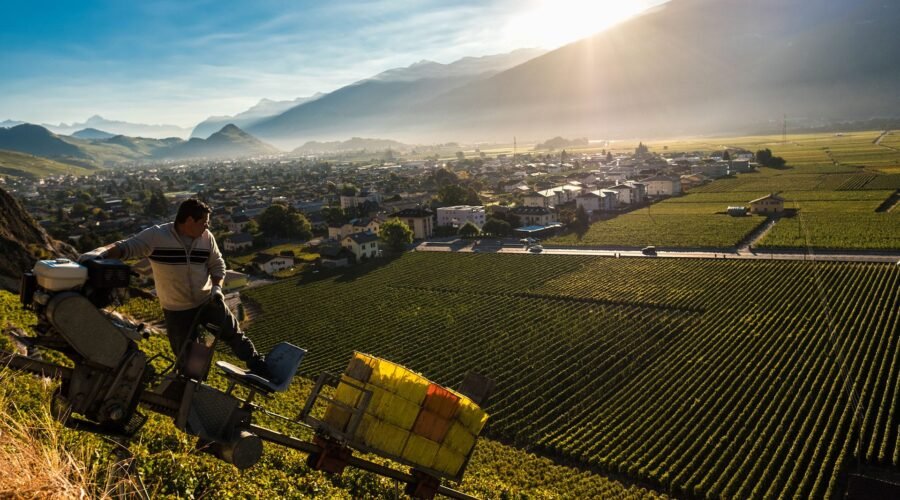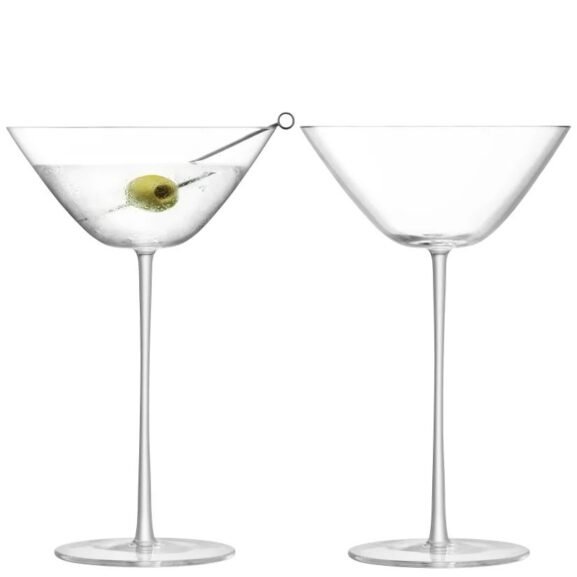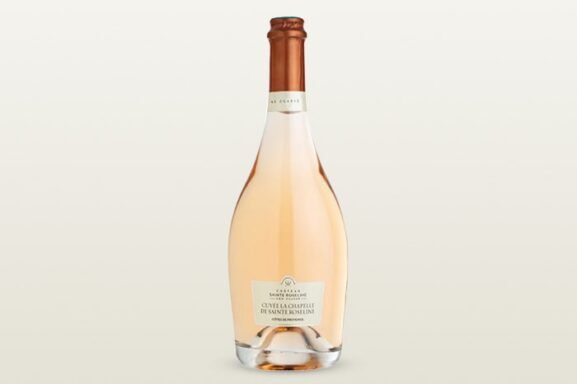Culture: The Ascent of Alpine Wine
When people think of the Alps, the crescent-shaped mountain range stretching from southern France to Slovenia, they perhaps picture powdery ski slopes and stunning hiking scenery framed by emerald-colored waters and soaring peaks. Many don’t realize it’s also home to diverse winemaking cultures.
The wines made in Alpine regions, which come in white, rosé, red and sparkling varieties, are often subtle, nuanced and distinctive. “There is a briskness to these wines, something snappy and lean, but also powerful and structured,” says David Hatzopoulos, sales representative at Living Wine, a Brooklyn-based importer specializing in wines crafted around the Alps.
However, these bottlings are often outshadowed by those from more prominent wine-making regions for a host of geographical, economic and historical reasons. Here, we review the history of Alpine wine, and why these bottles deserve a spot in your collection.
The History of Alpine Wines
The Alps cut across eight countries—Austria, France, Germany, Italy, Liechtenstein, Monaco, Slovenia and Switzerland. However, only France, Italy, Switzerland and, to a lesser degree, Austria can claim prominent viticulture right by the mountains. In France, the regions of Savoie, Bugey, Isère, Diois and Hautes-Alpes all boast great wines. In Switzerland, Valais, Ticino and Graubünden are prominent regions. Italy has several, including Trentino-Alto Adige, Valle d’Aosta and Valtellina. In Austria, the larger Alpine winegrowing area is technically Bergland, but only the Carinthia region (or Kärnten in German) has noteworthy vineyard acreage.
A variety of wine styles are made across the Alps’ microclimates and cultures. While mineral-driven, savory, stony and even salty whites can be found in almost all areas, fully ripe, lower-alcohol reds can also sustain in the cooler climate. This is likely due to the unique history, principal grape varieties, topography and viticultural techniques employed in the Alps.
You May Also Like: A Wine Lover’s Guide to Slovenia, from the Alps to the Adriatic Sea
Most Alpine regions have a winemaking culture that goes back at least 2,500 years. But the remote nature of the mountain terrain and lack of financial resources made it difficult for winemakers to historically find success.
“Culturally speaking, people from the Alps have been very poor for centuries,” says Emilio Zierock, winemaker and co-owner of Foradori winery located in the Italian region of Trentino, which he says used to be the poorest area in the Austro-Hungarian empire. “The infrastructure just wasn’t there.”
The story is similar in France. “Before the Winter Olympic Games in 1992 in Savoie, there was no highway, so the tourism here wasn’t as popular,” says Maxime Dancoine, winemaker and proprietor of the organic-certified estate Domaine de l’ Aitonnement. “Since then, the region has changed a lot.”
Though medieval times encouraged interest in wine, the mid-1800s brought phylloxera, which was followed in the next century by two world wars. Local vineyards lay decimated until the introduction of industrialized agriculture just after World War II.
Of course, the area’s mountainous terrain didn’t make winemaking any easier. The cooler winds and low temperatures threaten frost, while abundant water brings the pressure of fungal diseases. Plus, the rugged landscape requires that most vineyards to be situated on steep slopes and terraces, making farming sometimes akin to mountain climbing.
“It was the advent of ski tourism”—which began about 40 years ago and brought visitors eager to sample local wines—”and [the] introduction of chemicals and the tractor to make work in the vineyards easier that allowed their survival,” says Wink Lorch, author of Wines of the French Alps: Savoie, Bugey, and Beyond.
Still, instead of quality, most farmers of that time focused on quantity and ways to increase their earnings. Though their efforts brought back the region’s vineyards, it negatively impacted the reputation of the Alpine wine. Up until the 1990s, Alpine wines were, for the most part, known as industrial, easy-drinking, inexpensive wines, which were consumed mostly in local ski resorts.
Alpine Wines Today
Over the last few decades, a confluence of factors have put Alpine wines back on the map. Among them? Climate change.
In most years, the terroir produced wines that were quite austere, with high acidity and low pH levels. A 2.8 pH level is “okay to make a base for sparkling wine,” but it doesn’t translate to an easy-to-drink still wine, Dancoine explains. Climate change, however, has raised temperatures over the last 30 years, which causes grapes to ripen easier and achieve a lower acidity. This has translated to wines with higher pH levels that are more drinkable.
A shift toward artisanal winemaking has also contributed to a renewed interest in Alpine wine. “Until the past decade or two, most producers only got cheap prices for their wines, so working by machine and using chemicals enabled financial survival,” Lorch explains. “Fortunately, younger generations are improving the situation dramatically.”
Many sommeliers and other wine professionals around the world are starting to notice. Among them is Aric Wood, co-founder of Archetyp, a wine club in Portland, Oregon, which offers Alpine wines.
“These are wines made with love,” says Wood. The new guard of Alpine wine producers “farms the vineyard and knows intimately every vine,” he says. “These wines will inevitably have more of an artistic expression.”
In fact, today, most craft wineries in the Alps work the vineyards by hand. “[We put in] around 1,500 hours per hectare in a year,” says Isabella Pelizzatti Perego, sales manager at ARPEPE, a 40-acre winery in Valtellina in the Italian Alps. “We are almost energy independent since all work is completely manual.”
Although slow in these areas, the move toward environmentally-conscious farming is nevertheless on the rise. Driven by organic and biodynamic principles, many wineries follow low-intervention vinification methods in the cellar. Whereas in past decades, when growers sold their grapes for use in lower-quality wine because it was more financially viable, new generations are now seeing the value in creating artisanal, environmentally-conscious wines. The takeaway for consumers: Expect to see better quality wines due to more care in the production method, but with a higher price tag.
An interest in lower-alcohol options has also helped boost Alpine wines. Many reds produced in this region, like Mondeuse, Schiava and even Nebbiolo, are naturally lower in alcohol. These varieties have adapted to the climate and ripen perfectly, but produce very little sugar. Up until the early 2000s, the prevailing notion was that bigger is better in terms of wine. But many producers have started to pull back on this, particularly because the area’s culinary fare tends to be lighter and more delicate, which is better complemented by low-alcohol wines.
You May Also Like: Nebbiolo Reaches New Heights in the Alpine Vineyards of Valtellina
One notable vintner in the Italian Alps is Martin Gojer. With his wife, Marion Untersulzner, Gojer runs Pranzegg, a 10-acre winery in Alto Adige. He took over his family’s estate in 2008 and quickly converted the vineyards to biodynamics and stopped selling to the local cooperatives. “We can’t make cheap wines here,” says the couple, commenting on the difficulties of working in the steep vineyards. They focus on native grape varieties, including the red grapes Schiava (Vernatsch) and Lagrein, which can help to preserve the agricultural and cultural history of the winemaking region. “The potential is to make great wines from local grape varieties, in a sustainable way.”
Another couple focusing on native grapes is Isabella Kellenberger and her husband, Stéphane, who run Vin d’oeuvre winery, where they specialize in bottlings made with the white grapes Chasselas, Heida and Humagne Blanc. It’s located in Valais, a region responsible for about a third of the total wine production in Switzerland. It’s home to a tremendous diversity of wine varietals. “The Valais alone has about 50 different grape varieties—Humagne Blanc, Petite Arvine, Amigne, Rèze or Lafnetscha, just to name a few,” she says.

The Future of Alpine Wines
Experimentation is the name of the game for many Alpine winemakers going forward, especially those grappling with sustainability challenges. Some vineyards are testing out new plantings, including fungus-resistant varieties known as PiWis.
“This morning, we replanted our new terraced vineyards with PiWis, trained in Guyot style,” says Carmen Augschöll of her family winery, Weingut Röck, in the Isarco Valley in Alto Adige. “This is best seen in the excellent wines of [PiWi pioneer] Thomas Niedermayer.” She believes that the success of Alpine PiWis could fundamentally change what’s grown here. “However, we still love our Vitis vinifera varieties,” she stresses. “Losing them would be a great loss.”
Alpine winemaking is also expanding beyond its historical borders. In the Austrian Alps, “foreign” Burgundian grapes have found their way into the vineyards. The most prominent example is the Carinthia region, with just over 300 acres of vineyards. Here, Chardonnay and varieties of the Pinot Noir family are abundant. The plantings sit alongside the Sauvignon Blanc, Riesling and Traminer.
“We don’t have a lot of wine culture here since [historically] it has been an area famous for its orchards,” explains Uta Slamanig, who with partner Marcus Gruze runs Carinthia-based winery Weingut Georgium. Gruze took over the family farm in 2008 and created the only biodynamic and natural wine estate in the area. Alpine wine, she believes, is just beginning to realize its full potential.
“We are still in baby shoes,” she says. “[We’re] in the process of finding our identity.”
Last Updated: August 17, 2023


